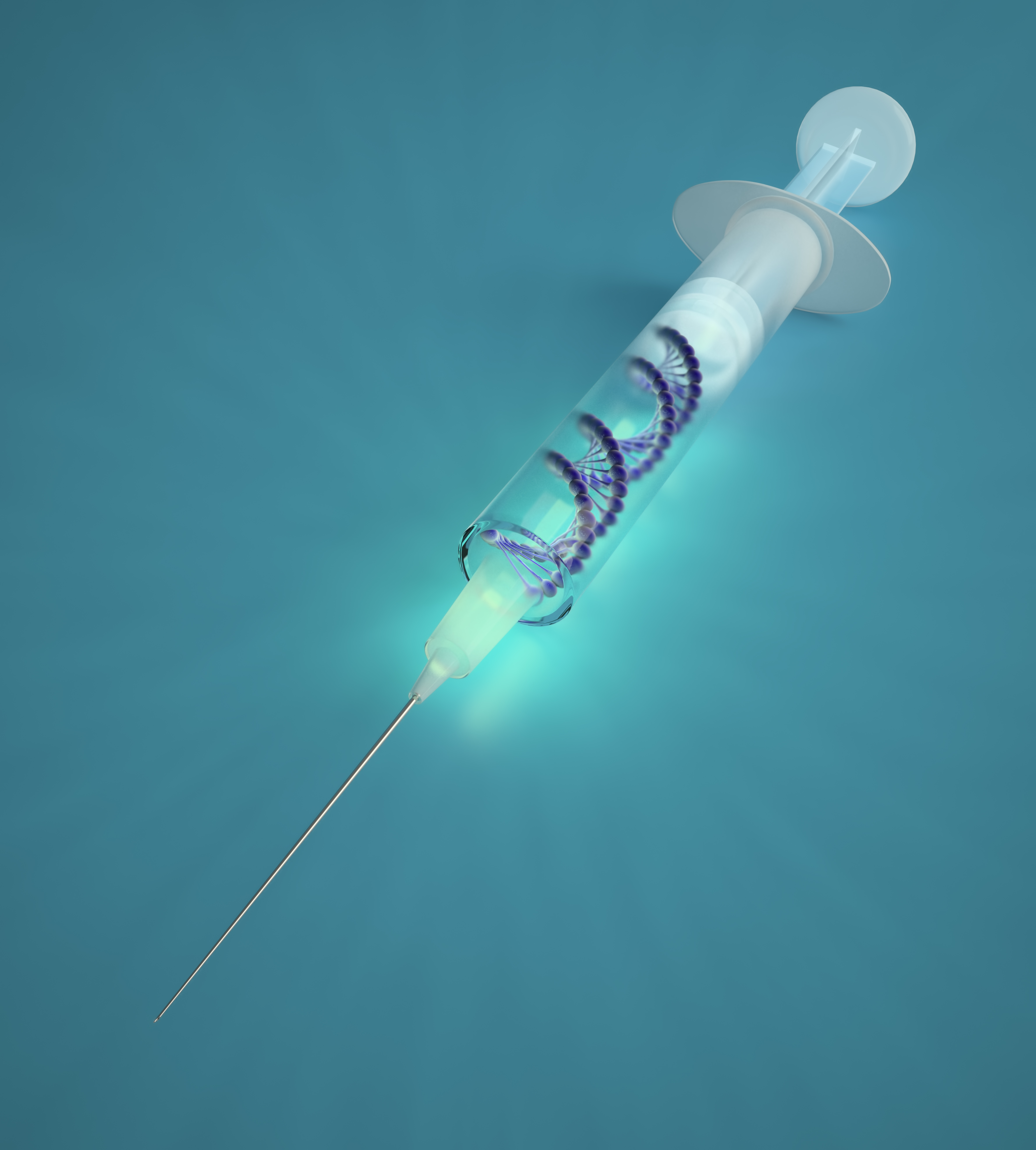
Positive news from Wave Life Sciences SELECT-HD trial
The outcomes of the SELECT-HD clinical trial are out, with encouraging news for this allele-selective huntingtin lowering therapy

On 25th June 2024, Wave Life Sciences shared the results of their SELECT-HD clinical trial. This trial tested a therapy called WVE-003, designed to only lower the expanded, harmful form of the huntingtin (HTT) protein found in people with Huntington’s disease (HD). The data released today give positive updates on the safety of this therapy as well as how well it is working. Let’s get into it!
Allele selective lowering – what’s that about?
HTT lowering therapies are one of the leading approaches being tested in clinical trials at present, with the aim that they might slow or halt the progression of HD. As the name suggests, all of these therapies aim to reduce the amount of the harmful HTT protein that is made in people who have HD.

Since we all inherit two copies of every gene – one from Mom and one from Dad – nearly everyone who has HD would have inherited a regular copy of the HTT gene, and an expanded copy of the HTT gene, which has more than 36 “CAG” DNA letter repeats. The expanded HTT gene makes an expanded form of the HTT protein which is thought to be harmful. By reducing the amount of this harmful protein, scientists hope this might improve signs and symptoms of HD.
There are lots of different approaches scientists are taking to try and lower the levels of the HTT protein in people with HD. Many of those currently in the clinic actually target the levels of both regular and expanded HTT, so both forms of the protein are lowered. This is the case for tominersen, developed by Roche; AMT-130, developed by uniQure; and PTC-518, developed by PTC Therapeutics.
Wave are taking a different approach to these companies as their therapy only targets the expanded form of HTT. WVE-003 is an antisense oligonucleotide which exploits very specific single letter changes in the genetic code which are only found in the expanded HTT gene. The scientists at Wave think that this is important as the regular HTT protein has lots of important jobs to do in the cells of our bodies. So by maintaining the level of the regular protein, and reducing the levels only of the expanded HTT, their drug might be safer and have fewer side effects.
This approach does have some drawbacks. Everyone who is interested in participating in a trial for this drug first needs to have a genetic test. Only folks who have the specific letter changes targeted by the drug, termed SNP3, are then eligible for this therapy. This means that only a portion of people with HD might be treated with WVE-003 at present. Based on current genetic data, scientists estimate this to be about 40% of the patient population.
WVE-003 is given to people participating in the SELECT-HD trial by spinal tap. This is the same way tominersen, another antisense oligonucleotides or ASO therapy, is administered. This does pose a bit of an extra burden on people receiving this drug over say a drug in tablet form, as it must be administered by a specialist in a clinic with a particular set up.
How was SELECT-HD designed?
There were two different arms to the study: a single dose arm and a multi-dose arm. The single dose arm tested a single shot of the drug at various doses and then tracked participants over the course of almost 90 days. The multi-dose arm tested three repetitions of the lowest dose given at 8 week intervals and participants were tracked for almost 200 days. Both arms of the study had a placebo control group who received spinal taps which did not administer the drug.
“The most important thing for a Phase 1 / 2 trial like this, is to make sure that the therapy being tested is safe.”
The trial enrolled 45 people in the single dose arm and 23 people in the multi-dose arm. In both arms, the majority of participants are either Stage 2 or 3, with just two Stage 0 folks in the single dose arm, as defined by the HD Integrated Staging System. All folks in the trial were monitored in clinical evaluations, had MRI scans of their brains, and gave spinal fluid samples at regular intervals.
What were the findings of the trial?
Safety first
The most important thing for a Phase 1 / 2 trial like this, is to make sure that the therapy being tested is safe. In the single dose arm of the study, the side effects experienced by folks receiving drug or placebo were approximately the same, suggesting that this dosing regime is safe and the drug was well tolerated. In the multi-dose arm, more mild and moderate side effects were observed in participants who received the drug. No serious adverse events were seen at 30mg for either arm.
Another measurement the trial looked at is neurofilament light, often called NfL, a biomarker of brain health. In people with HD, NfL levels tend to rise over time, as higher levels of NfL generally indicate that the brain is getting more sick. In this trial, Wave found that folks treated with the drug largely had similar changes to their levels of NfL as those who received the placebo.
There were a few folks whose NfL levels rose above that of the placebo control group but this data was not broken down by HD stage or dosing regimen in the data presented. In such a small trial it is difficult to say exactly what this might mean, but it’s something Wave and others will be keeping an eye on as this program moves forward.
Overall, the news is largely positive with respect to safety. The data collected so far indicate that the WVE-003 is generally well tolerated with limited side effects at the doses tested.

Selective lowering of expanded HTT
The next critical thing to be assessed in this trial is whether WVE-003 does indeed selectively lower levels of the harmful, expanded HTT protein, whilst leaving the regular healthy protein intact. When looking at changes to the levels of expanded HTT in both the single and multi-dose arms of this trial, the protein levels were reduced in participants taking the drug compared to those taking placebo. In both arms, this effect was shown to be statistically significant which means we can be very confident in the changes to the levels of expanded HTT affected by this drug – good news!
In the single dose arm, whether the participant received 30, 60 or 90 mg of the drug didn’t seem to make too much difference, and they all led to a 20-30% reduction of expanded HTT compared to placebo. What is interesting to see is that this single shot of drug gave a sustained HTT lowering effect measured up to 90 days later, suggesting this drug sticks around and keeps working over a fairly long period of time. Similarly, in the multidose arm, a 44% reduction of expanded HTT levels was observed on Day 197 of the trial, a full 12 weeks after the last treatment with WVE-003. This kind of data is useful to help the scientists figure out what kind of dosing strategy they might use moving forward.
The data presented by Wave also show that levels of the normal HTT protein are largely unaffected, and possibly even increase a little bit with treatment. Again, this is good news. It shows that WVE-003 does seem to only be changing the levels of the expanded HTT protein, leaving regular HTT levels intact.
Other measures from the trial
This trial is not designed to measure whether WVE-003 impacts signs or symptoms of HD. Showing effective HTT lowering with a drug is very different from showing the drug is disease-modifying, a term used to describe a therapy which might slow or halt HD. Nonetheless, Wave conducted some exploratory studies in this trial to look at possible changes to brain structure as well as other clinical measurements.
MRI scans were taken of trial participants to measure how a region of the brain called the caudate changed over time. The caudate gets smaller over time in people with HD. People in the multidose arm of the trial seemed to maybe have slightly less change to the size of their caudate over time. Another region of the brain, called the ventricles, also tracked in size the same as people not taking the drug. Neither of these findings were statistically significant but if shown to hold true in a subsequent study, they could suggest WVE-003 is slowing down the death of cells in the brain. However, at present, the data are promising, but inconclusive.
“This is the first time any drug has been shown to only impact the expanded harmful form of HTT, so a big milestone for the HD community.”
The trial also assessed Total Motor Score (TMS), a clinical metric which assesses movement symptoms in people with HD. The higher the score, the more advanced the symptoms. Again, the data seem to point to a slight decrease in TMS for people in the trial receiving WVE-003 for just over six months, when compared to placebo. This would be good news if true, but we will need a much bigger study to figure this out for sure.
So what’s next for WVE-003?
Overall, the findings from the SELECT-HD trial are positive: the drug appears largely safe and works as intended to effectively lower just expanded HTT. This is the first time any drug has been shown to only impact the expanded harmful form of HTT, so a big milestone for the HD community. There are also some positive suggestions that the drug might be helping signs and symptoms of HD, but we need more data to be sure of that.
It should be noted that Phase 1 / 2 trials like this are, by design, very small: until we know the drug is safe, we don’t want to be testing it in lots of people. With this encouraging safety data in hand, the next step is to test this drug in a much larger cohort of people to find out whether WVE-003 might truly slow or halt the progression of HD.
Given the encouraging data, the team at Wave are thinking about a potential path for accelerated approval of WVE-003 for the treatment of HD. They have even started to draft the design of their next study which would be much larger (around 150 people) and focus on testing WVE-003 in people with stage 1 or 2 HD. We look forward to learning more from Wave in the coming months about their forthcoming study.
Learn more
For more information about our disclosure policy see our FAQ…


